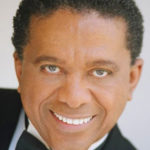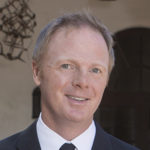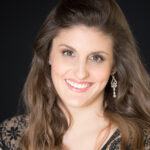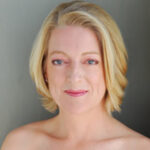
Durufle Requiem/ Dilworth Rain Sequence
Mar 14 2012 – 2:16am Santa Barbara NewsPress
JOSEF WOODARD, NEWS-PRESS CORRESPONDENT
Some brave new ideas seem so right and logical as to feel older than they, in fact, are. Take the Santa Barbara Choral Society’s “Masterworks at San Roque” series, still a fresh and evolving idea for the esteemed choral group, but settling in beautifully. Last weekend’s edition of the ongoing series, beautifully performed, intriguingly programmed and well-attended and appreciated — not to mention hearty in the audience participation department — had the general feeling of a tradition very much in the making or the already made.
On a summery Sunday afternoon, following the Saturday night performance, a sizable crowd showed up in the acoustically-ripe San Roque Catholic Parish, smack dab in the middle of the San Roque ‘hood, to partake of this wonderful group’s work. For the occasion, the program featured two larger, new and newer, works: Maurice Duruflé’s 1947 Requiem, and the west coast premiere of Rollo A. Dilworth’s 2011 “The Rain Sequence,” an enchanting and easy-going spiritual/gospel lark of a piece.
In this case, the contemporary and modern status of the scores was anything but a challenge to sensitive or conservative ears. In some ways, Duruflé’s take the “Requiem” form is lighter, kinder and gentler than most of the older standard bearers in the genre. Little of the sturm, drang, ominous sonorities and sometimes gnashing emotionality of Mozart or Verdi’s are to be found in the French composer’s music, which errs on the side of celebrating hope and light.
Director Jo Anne Wasserman presided nicely over a large scale choir, its normal ranks enhanced by the presence, polish and heft of the Westmont College Choir, as well as a smallish but mighty orchestra and David Potter taking on the all-important and integrated organ part for the Requiem.
Duruflé drew on a mid-twentieth century musical vocabulary for his score, a mostly consonant language flecked with some post-impressionist harmonies, but also managed to be steeped in classic liturgical musical manners, going back as far as Gregorian roots of the Requiem. Certainly, his score plays well with the sweep and dynamic bravura of the setting, creating an emphatically big picture, sonically and expressively.
A bold sonic power comes forth in the early sections of the piece, while things turn mysterious and darkly shimmering by the “Domine Jesu Christe,” here with the fine baritone Ralph Cato doing the soloist honors. The “Sanctus” movement starts in a soft, affirmative mood, quickly building to a shuddering crescendo and settles back down into an air of calm. Mr. Cato returned for the “Libera Me,” with its ebbing and flowing waves of energy, in both harmonic and dynamic terms, and the “In paradisum” proved a peaceable, dream-like denouement to what was an altogether moving musical performance.
After intermission, the choral group brushed past a pair of older works, for choral musical history’s sake. Benjamin Britten’s “Festival te Deum,” from 1945, is a compact but substantial and varied choral statement in itself, given weight and chiaroscuro by its orchestral part. As for a token “early music” registration on the program, the choir summoned an ascetic and gorgeous collective sound on the acappella “Duo Seraphim,” by Jacob Handl. Dating from 1591, this was the sole work on the program not from the last hundred years, oddly and refreshingly enough.
Things turned even lighter with the premiere of Mr. Dilworth’s freshly written The Rain Sequence Didn’t It Rain a simple and infectious three-part gospel work based on texts by African-American writers of note, Langston Hughes and Paul Lawrence Dunbar. Mr. Cato conjured a joyful noise as soloist in the piece, with some help from the audience, duly instructed — and obligingly so — to hum “Amazing Grace” and produce rain sounds with hands and feet, on command.
It mattered not that the liturgical pendulum swung from Catholic to Protestant/Pentecostal for this music, here in the San Roque parish church. The music was its own ecumenical reward, and an inspiration to the ear and soul, whatever one’s religious persuasion

 American baritone, Ralph Cato has travelled the world extensively, telling stories in song with his warm, clarion baritone voice.
American baritone, Ralph Cato has travelled the world extensively, telling stories in song with his warm, clarion baritone voice. Tenor, Benjamin Brecher has performed over fifty operatic roles with many of the world’s most prestigious opera companies, specializing in the high lying lyric tenor repertoire. He has performed 16 roles with New York City Opera alone. Career highlights include performances with Opera Orchestra of New York, L’Opera de Nice, Rossini Opera Festival in Pesaro, L’Opera de Montreal, Santa Fe Opera, Opera Theatre of St. Louis, among many others. His orchestral solo repertoire includes Mozart, Handel, Orff, Bach, Haydn, as well as many performances of Britten. In 2000 he began performing the great Irish Tenor songs in a concert produced for him entitled A Celtic Celebration, Twenty years later, the show has become a North American hit with performances with 45 Symphonies in North America. Ben continues his discography having added his twelfth recording in 2016 Forgotten Liszt, with pianist Robert Koenig, and will record a new release in 2022 entitled “Three Centuries of Thomas Moore” including the music of Britten, Berlioz, and Sarah Gibson on MSR Classics. He is a Professor of Voice at University of California Santa Barbara, where he has served as the Head of Voice.
Tenor, Benjamin Brecher has performed over fifty operatic roles with many of the world’s most prestigious opera companies, specializing in the high lying lyric tenor repertoire. He has performed 16 roles with New York City Opera alone. Career highlights include performances with Opera Orchestra of New York, L’Opera de Nice, Rossini Opera Festival in Pesaro, L’Opera de Montreal, Santa Fe Opera, Opera Theatre of St. Louis, among many others. His orchestral solo repertoire includes Mozart, Handel, Orff, Bach, Haydn, as well as many performances of Britten. In 2000 he began performing the great Irish Tenor songs in a concert produced for him entitled A Celtic Celebration, Twenty years later, the show has become a North American hit with performances with 45 Symphonies in North America. Ben continues his discography having added his twelfth recording in 2016 Forgotten Liszt, with pianist Robert Koenig, and will record a new release in 2022 entitled “Three Centuries of Thomas Moore” including the music of Britten, Berlioz, and Sarah Gibson on MSR Classics. He is a Professor of Voice at University of California Santa Barbara, where he has served as the Head of Voice. Born and raised in Southern California, April Amante is a versatile soprano with expertise and facility in repertoire spanning from early music to contemporary musical theater.
Born and raised in Southern California, April Amante is a versatile soprano with expertise and facility in repertoire spanning from early music to contemporary musical theater. Tracy Van Fleet is pleased to return to the Santa Barbara Choral Society. As a soloist, she has performed with the Los Angeles Master Chorale, Lüneburg Symphony in Germany, Orquesta Filarmónica de Boca del Río in Mexico, Pasadena Symphony, Naples Philharmonic, Los Angeles Bach Festival, San Diego Chamber Orchestra, Colorado Philharmonic, USC Symphony and Chorus, and others. She has had many appearances with the Los Angeles Opera, Los Angeles Philharmonic, Pacific Symphony, Hollywood Bowl Orchestra, Opera Pacific, San Diego Opera and Opera Colorado.
Tracy Van Fleet is pleased to return to the Santa Barbara Choral Society. As a soloist, she has performed with the Los Angeles Master Chorale, Lüneburg Symphony in Germany, Orquesta Filarmónica de Boca del Río in Mexico, Pasadena Symphony, Naples Philharmonic, Los Angeles Bach Festival, San Diego Chamber Orchestra, Colorado Philharmonic, USC Symphony and Chorus, and others. She has had many appearances with the Los Angeles Opera, Los Angeles Philharmonic, Pacific Symphony, Hollywood Bowl Orchestra, Opera Pacific, San Diego Opera and Opera Colorado.